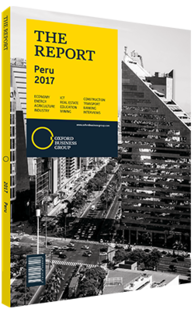Miguel Uccelli, CEO and Country Head, Scotiabank Peru: Interview

Interview: Miguel Uccelli
What type of products, instruments and channels could help enhance financial inclusion?
MIGUEL UCCELLI: Several products, services and channels play a significant role in increasing financial inclusion levels. In regards to products, one must take into account that there are only 240,000 mortgages in Peru for a country of more than 30m people, representing less than 6% of the country’s GDP. Since 2003 the country has experienced unparalleled economic and social growth and development, which has allowed the number of mortgages to increase, and is key to enhancing financial inclusion. Future sustainable growth will depend on supply and demand, and the country’s shortage of 2.5m housing units guarantees that demand for mortgages will continue in years to come. Nevertheless, the size and scope of housing projects needs to increase in order to guarantee that supply meets demand. In any case, mortgages will continue to be an important tool in expanding financial inclusion levels. Consumer credit will also play a significant role in increasing financial inclusion; however, when combined with credit cards, this only represents 6.3% of the country’s GDP, or 13% if mortgages are included in the equation. In order to improve such figures, banks need to continue simplifying processes and access to savings products.
In regards to channels, Peru’s banking system has a wide variety of payment options, despite the fact that there is still significant room for growth. Technology is playing an increasingly relevant role in enhancing financial inclusion and developing new channels. For instance, combined efforts among banks, telecoms companies, microfinance institutions and the government resulted in the creation of BiM. This electronic wallet, which can be managed from any cell phone, allows its users to make deposits and transfers, withdraw cash and even charge phone credit. Any Peruvian with a cell phone can now make transactions without a bank account or intermediary financial institution. Although 90% of the transactions in Peru are still cash-based, BiM is expected to enhance financial inclusion efforts. The system was developed by closely analysing and learning from the mistakes of more than 140 global case studies. Other digital solutions, such as apps, are expected to play a significant role in increasing the number of bankable Peruvians, especially as they become more financially educated and savings continue to increase.
How would eliminating transaction fees affect the number of credit cards in the market?
UCCELLI: Eliminating credit card fees would be extremely counterproductive and a threat to the soundness of the banking sector. Naturally, it would certainly result in an increase in demand for credit cards; however, it would also dramatically increase bank exposure to risk. It is important to recognise that fees exist as a tool to manage delinquency, and current fees were set after closely studying clients’ financial behaviour and credit propensity. Unfortunately, the reality is that not every client pays for the products acquired. In fact, the financial delinquency rate in the country hovers at around 6%.
There are two ways to approach this situation; either those clients that meet their financial obligations are asked to pay higher fees, or those that fail to do so pay these fees. In order to safeguard the sustainability of the banking system and minimise risk, it is only natural that banks choose to offer lower fees or promotions to those clients that meet their financial obligations, and charge higher fees to those clients with a higher propensity for delinquency. Furthermore, it is important to take into account that fees are intrinsically a way to protect client money by decreasing risk. If delinquency rates were to decrease and the differences in financial behaviour between segments were bridged, fees would naturally be lowered in the context of falling delinquency rates.
You have reached the limit of premium articles you can view for free.
Choose from the options below to purchase print or digital editions of our Reports. You can also purchase a website subscription giving you unlimited access to all of our Reports online for 12 months.
If you have already purchased this Report or have a website subscription, please login to continue.

